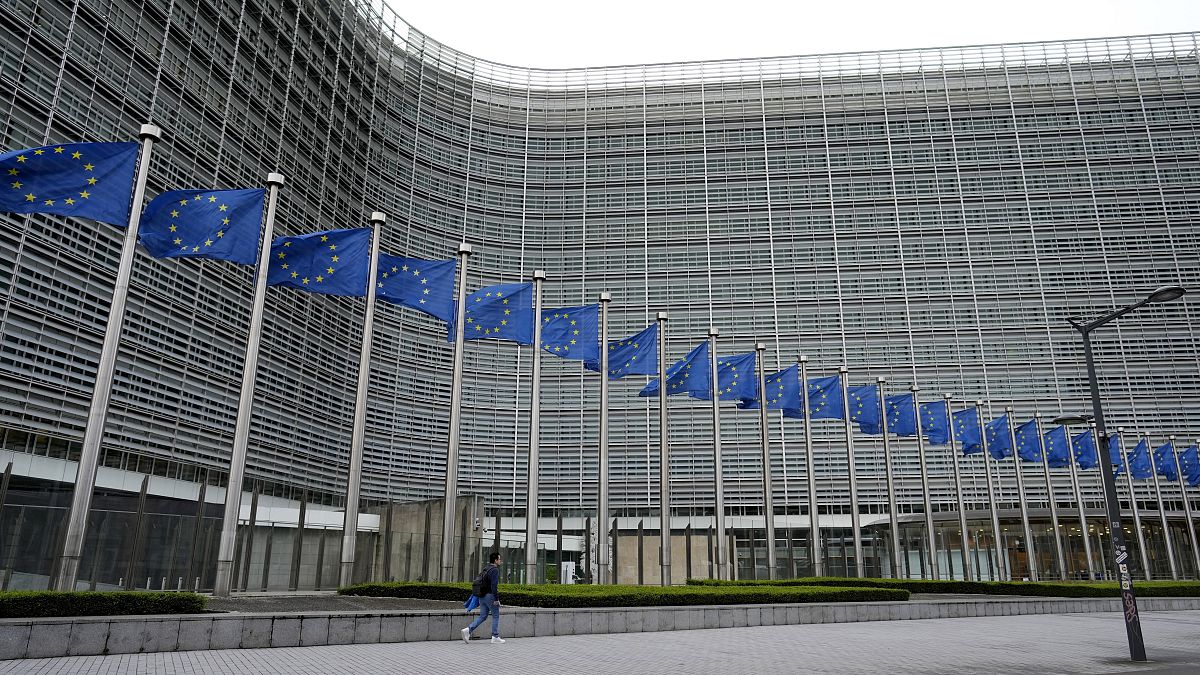Technology
Huawei’s new tri-fold phone costs more than a 16-inch MacBook Pro
/cdn.vox-cdn.com/uploads/chorus_asset/file/25613758/Huawei_Mate_XT_Ultimate_Design_hero.jpeg)
After weeks of teasing, Huawei has officially launched the world’s first dual-hinged, triple-screen foldable phone and it’s just as expensive as we feared. In China, prices for the Mate XT Ultimate Design start at 19,999 yuan (about $2,809) for the 256GB storage model — that’s roughly $300 more than a brand-new 16-inch MacBook Pro.
All models are equipped with 16GB of RAM, and two additional storage variants are available that cost 21,999 yuan (about $3,089) for 512GB and 23,999 yuan (about $3,370) for 1TB. Chinese retailer Vmall reported 3.7 million preorders before pricing was announced.
The Mate XT features an inverse dual-hinge design that folds in a “Z” shape, allowing it to be used in a variety of formats. The OLED display measures 6.4-inches when fully collapsed as a traditional single-screen device. When fully unfolded, that display increases to 10.2-inches (2,232 x 3,184) and can still be used when partially unfurled in a smaller 7.9-inch configuration.
The device comes with a 5,600mAh battery and supports 66W of wired charging or 50W wirelessly. There’s a triple camera setup located on the rear that consists of a 50-megapixel main camera, a 12-megapixel ultrawide, and a 12-megapixel periscope camera. The hole-punch selfie camera on the front is 8 megapixels, and located on the left-most screen when the device is fully unfolded.
We’ve reached out to Huawei to ask about availability outside of China, but we’re not holding out hope.

Technology
Gemini can now tell when a PDF is on your phone screen
/cdn.vox-cdn.com/uploads/chorus_asset/file/25290333/STK255_Google_Gemini_C.jpg)
In the latest version of the Files by Google app, summoning Gemini while looking at a PDF gives you the option to ask about the file, writes Android Police. You’ll need to be a Gemini Advanced subscriber to use the feature though, according to Mishaal Rahman, who reported on Friday that it had started rolling out.
If you have the feature, when you summon Gemini while looking at a PDF in the Files app, you’ll see an “Ask about this PDF” button appear. Tapping that lets you ask questions about the file, the same way you might ask ChatGPT about a PDF. Google first announced this screen-aware feature during its I/O developer conference in May.
Rahman posted a screenshot of what it looks like in action:
Other context-aware Gemini features include the ability to ask about web pages and YouTube videos. For apps or file types without Gemini’s context-aware support, the assistant instead offers to answer questions about your screen, using a screenshot it takes when you tap “Ask about this screen.”
Technology
Fox News AI Newsletter: Cate Blanchett 'deeply concerned'

LONDON, ENGLAND – DECEMBER 03: Cate Blanchett attends the World Premiere of “The Lord Of The Rings: The War Of The Rohirrim” at Odeon Luxe Leicester Square on December 3, 2024 in London, England. (Photo by Jed Cullen/Dave Benett/WireImage) (Jed Cullen/Dave Benett/WireImage)
Welcome to Fox News’ Artificial Intelligence newsletter with the latest AI technology advancements.
IN TODAY’S NEWSLETTER:
– Cate Blanchett worries AI could ‘totally replace anyone’
– ChatGPT CEO talks Elon Musk feud, criticizes Biden admin AI regulation
– 10 things you should never tell an AI chatbot
‘DEEPLY CONCERNED’: Cate Blanchett is one of the many actors expressing fears about artificial intelligence. In a recent interview with the BBC, the Oscar winner said the technology “deeply concerned” her.

Cate Blanchett. (Rocco Spaziani/Archivio Spaziani/Mondadori Portfolio via Getty Images)
ALTMAN OPENS UP: OpenAI CEO and co-founder Sam Altman opened up about Elon Musk’s feud with him and his view of how regulations related to artificial intelligence development should be framed.

Sam Altman, chief executive officer of OpenAI, during a panel session on day three of the World Economic Forum in Davos, Switzerland, on Jan. 18, 2024. (Stefan Wermuth/Bloomberg via Getty Images / Getty Images)
CHATBOT SAFETY: This is a heartbreaking story out of Florida. Megan Garcia thought her 14-year-old son was spending all his time playing video games. She had no idea he was having abusive, in-depth and sexual conversations with a chatbot powered by the app Character AI.
SPLIT STRATEGY: A recent survey found that investors and CEOs are viewing artificial intelligence (AI) investments differently. Nearly 80% of investors expect AI projects to generate a positive return on investment within the first year, while 41% CEOs of large-cap companies are willing to let AI initiatives mature over the course of one to two years before they expect positive results.
TECH REVOLUTION: Congress’s bipartisan task force on artificial intelligence recently released its long-anticipated report, detailing strategies for how the U.S. can protect itself against emerging AI-related threats while ensuring the nation remains a leader in innovation within this rapidly evolving sector.

Congress released a long-awaited AI report recently. (iStock)
Subscribe now to get the Fox News Artificial Intelligence Newsletter in your inbox.
FOLLOW FOX NEWS ON SOCIAL MEDIA
Facebook
Instagram
YouTube
Twitter
LinkedIn
SIGN UP FOR OUR OTHER NEWSLETTERS
Fox News First
Fox News Opinion
Fox News Lifestyle
Fox News Health
DOWNLOAD OUR APPS
Fox News
Fox Business
Fox Weather
Fox Sports
Tubi
WATCH FOX NEWS ONLINE
Fox News Go
STREAM FOX NATION
Fox Nation
Stay up to date on the latest AI technology advancements and learn about the challenges and opportunities AI presents now and for the future with Fox News here.
Technology
The US finalizes CHIPS Act funding for Samsung and Texas Instruments
The US Commerce Department has awarded Samsung and Texas Instruments with a combined over $6 billion in “direct funding under the CHIPS Incentives Program’s Funding Opportunity for Commercial Fabrication,” according to a pair of announcements published on Friday.
Samsung will get the larger of the two awards at $4.745 billion. The Commerce Department says the company will use this as part of its planned $37 billion investment in Texas chip facilities that include two new “leading-edge logic fabs and an R&D fab” in Taylor, Texas, and the expansion of its plant in Austin.
The company was originally slated to receive $6.4 billion. In a statement reported by Bloomberg, the company said that its “mid-to-long-term investment plan has been partially revised to optimize overall investment efficiency,” which suggests the company has dialed back its plans, according to the outlet.
Texas Instruments will receive $1.61 billion to bolster the $18 billion it plans to spend on projects like constructing two wafer fabs in Texas and a third in Utah. The Commerce Department announced smaller awards this week too, including $407 million in funding for Amkor Technology, a US-based company that tests and packages chips for companies like Apple.
All three awards were announced earlier this year, with Samsung first in April, and they join other CHIPS Act funding grants given to companies like Micron, Intel, and TSMC. And their finalizations come with just under a month to go before Donald Trump, who has criticized the CHIPS Act, assumes the US Presidency on January 20th.
-

 Politics1 week ago
Politics1 week agoCanadian premier threatens to cut off energy imports to US if Trump imposes tariff on country
-
/cdn.vox-cdn.com/uploads/chorus_asset/file/25782636/247422_ChatGPT_anniversary_CVirginia.jpg)
/cdn.vox-cdn.com/uploads/chorus_asset/file/25782636/247422_ChatGPT_anniversary_CVirginia.jpg) Technology1 week ago
Technology1 week agoInside the launch — and future — of ChatGPT
-
/cdn.vox-cdn.com/uploads/chorus_asset/file/25789444/1258459915.jpg)
/cdn.vox-cdn.com/uploads/chorus_asset/file/25789444/1258459915.jpg) Technology1 week ago
Technology1 week agoOpenAI cofounder Ilya Sutskever says the way AI is built is about to change
-

 Politics1 week ago
Politics1 week agoU.S. Supreme Court will decide if oil industry may sue to block California's zero-emissions goal
-
/cdn.vox-cdn.com/uploads/chorus_asset/file/25546252/STK169_Mark_Zuckerburg_CVIRGINIA_D.jpg)
/cdn.vox-cdn.com/uploads/chorus_asset/file/25546252/STK169_Mark_Zuckerburg_CVIRGINIA_D.jpg) Technology1 week ago
Technology1 week agoMeta asks the US government to block OpenAI’s switch to a for-profit
-

 Politics1 week ago
Politics1 week agoConservative group debuts major ad buy in key senators' states as 'soft appeal' for Hegseth, Gabbard, Patel
-

 Business6 days ago
Business6 days agoFreddie Freeman's World Series walk-off grand slam baseball sells at auction for $1.56 million
-
/cdn.vox-cdn.com/uploads/chorus_asset/file/23951353/STK043_VRG_Illo_N_Barclay_3_Meta.jpg)
/cdn.vox-cdn.com/uploads/chorus_asset/file/23951353/STK043_VRG_Illo_N_Barclay_3_Meta.jpg) Technology6 days ago
Technology6 days agoMeta’s Instagram boss: who posted something matters more in the AI age














